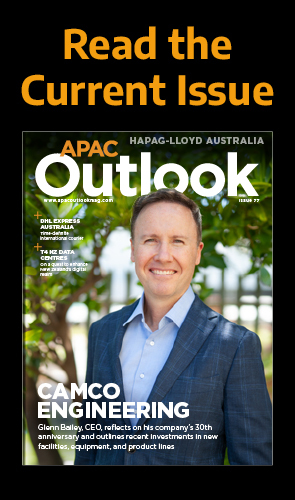We sit down with Vaibhav Dongre, Global Head of Marketing at Tata Communications Telecommunications Services (TCTS) at the company’s booth during Mobile World Congress.
It is safe to say that advancements in telecommunications technologies during the first two decades of the 21st century have been fundamental to the monumental progression seen in global digital transformation.
From the launch of the world’s first 3G commercial network in 2001 to recent 5G LTE developments, quoting speeds up to 50 times faster than that of the former, communications service providers (CSPs) and associated industry innovations have served to revolutionise both the consumer and enterprise spheres.
Much of this is owed to the work of CSPs themselves, readily investing in new technologies in order to support these ever-growing developments.
“The kinds of technologies we are now dealing with, whether its analytics, AI, automation, or other prominent trends, telcos have become more capable of making intelligent decisions,” reveals Vaibhav Dongre, Global Head of Marketing at Tata Communications Telecommunications Services (TCTS) as we sat down with him at the company’s booth during Mobile World Congress 2019.
“Take the internet of things, for example. If a sensor in an autonomous car fails, there’s no time for human intervention. What there is, however, is an opportunity for connectivity solutions to step in, solving the problem temporarily until a permanent fix is provided, using rapid, intelligent decision making.”
TCTS is one business helping to facilitate the rising use of new and emerging complex communications technologies.
A subsidiary of Tata Communications, it was formed in 2006 to consolidate, centralise and optimise the wider company’s operations internally, but despite this, it wasn’t long before the subsidiary’s capabilities and expertise were noticed by others.
“Pretty quickly we had CSPs coming to us and asking the same question – if you’re doing it for yourselves, why not do it for us as well?” explains Dongre.
Capitalising on the opportunities presenting themselves, TCTS began to work with other enterprises and has since established itself as a provider of core transformational services, working with telcos the world over.
“Scenarios like that of autonomous vehicles that we’re heading towards will be facilitated by the future telco, entities that will be the flag bearers of intelligent connectivity, operating as ubiquitous connectivity hubs,” Dongre continues.
Evaluating innovation
The idea of the future telco is one that TCTS has been exploring extensively of late, aiming to identifying the key transformation priorities of CSPs.
This examination manifested itself in a study, commissioned by the company itself and conducted by Ovum, that evaluated these priorities amongst 60 major telcos across the globe.
“From this we’ve seen that there are a number of steps that industry players are trying to take,” he reveals. “Many of these are related to simplification, retiring legacy technologies and replacing these, and the need of the hour is definitely automation.”
What TCTS found was that by bolstering speed, enhancing efficiency and reducing long term operational costs by investing, prominent telecommunications players are effectively streamlining their operations, helping improve customer engagement, deliver new services, and reduce manual processing.
Dongre continues: “Right now, innovation is the key piece of the puzzle when it comes to reaching the Nirvana of smart utility status, and unless you partake in the global ecosystem, you will not succeed.”
This innovation community is comprised of not only major players but equally new enterprises, simultaneously playing a fundamental role in driving change across industry.
Asked about Asia’s current role within this, Dongre replies: “It’s fair to say that various geographies are in different stages and have different flavours from a technology stance. North America, for example, has been a hub of new developments for decades.
“However, the world has caught up more than you’d think, and we’re seeing a lot of startups and disruptive business models coming through, not only in the way of technology but similarly in the way of operations, partnerships, and other fronts.
“This is something we’ve been seeing from a number of Asian companies in particular – businesses in this region are used to working with limited budgets so in many ways are forced into being more innovative in the knowledge that they may only have one shot to get their product or service right.”
Looking at the future of such companies and the wider industry as a whole, both in Asia and beyond, the Global Head of Marketing is quick to emphasise that innovation works in both ways.
He concludes, gathering his things: “I do believe that it’s time for the mature markets to start picking up on the lessons to be learned from emerging markets – markets that are very rapidly bringing innovations to the table.”




































